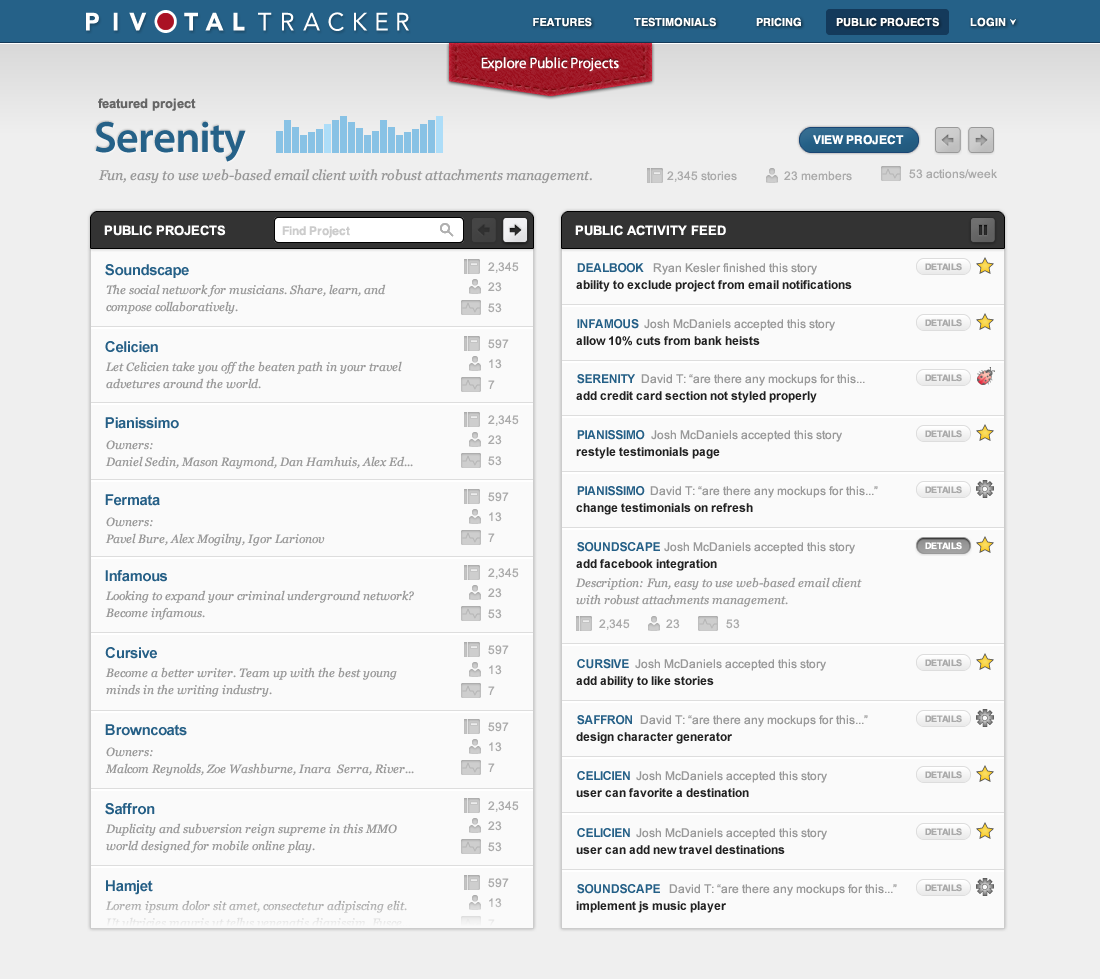This has been a common question recently, and so I’d like to take a few minutes and explain how the 60-day free trial works in Pivotal Tracker, clarify what your options are at the end of the trial, and also revisit what public projects are again.
When you first sign up for Tracker, we automatically make an account for you, which allows you to create projects and invite collaborators to them. As a Tracker user, you can own and share multiple accounts, and the first account that’s created when you sign up is put on a 60-day free trial. This free trial allows you to create as many projects as you’d like, and invite an unlimited number of collaborators to them.

As you get close to the end of your account’s free trial (or July 19, for those accounts that were created prior to Feb 19), you will receive a reminder email, and see a one-time popup when you sign in to Tracker.

At the end of the free period, your account automatically transitions to the free plan, which allows up to five private projects without collaborators (project members with read/write access), and 200MB of file attachments. If your account is under the free plan limits, then nothing changes—you can simply continue using your projects as before.
If you’re over the free plan limits, projects in the account will become read-only. All members of the projects in your account will continue to have access to their projects, indefinitely, and the projects can be exported to CSV files at any time.
Upgrading your account to a paid plan, based on the number of projects, number of collaborators, and/or file storage in use, will restore full access to all projects in the account immediately.
Archiving some of your projects, or removing collaborators and/or file attachments can also restore project read/write access.
You can also make your projects public. Public projects can be seen by anyone on the internet, including stories, comments, file attachments, and the names of all project members. Public projects, and activity in them, appear in the public projects directory and feed:

Public projects are completely free; they do not count towards any project or collaborator limits, regardless of which plan your account is on.
All projects are private by default, and only the users who have been invited by a project owner have access to them. A project owner can make a project public, in project settings:

Projects are never made public automatically—the only way a project can ever become publicly accessible is by the project owner explicitly making it public, on the project settings page.
If you have any question, please give us a shout by email.